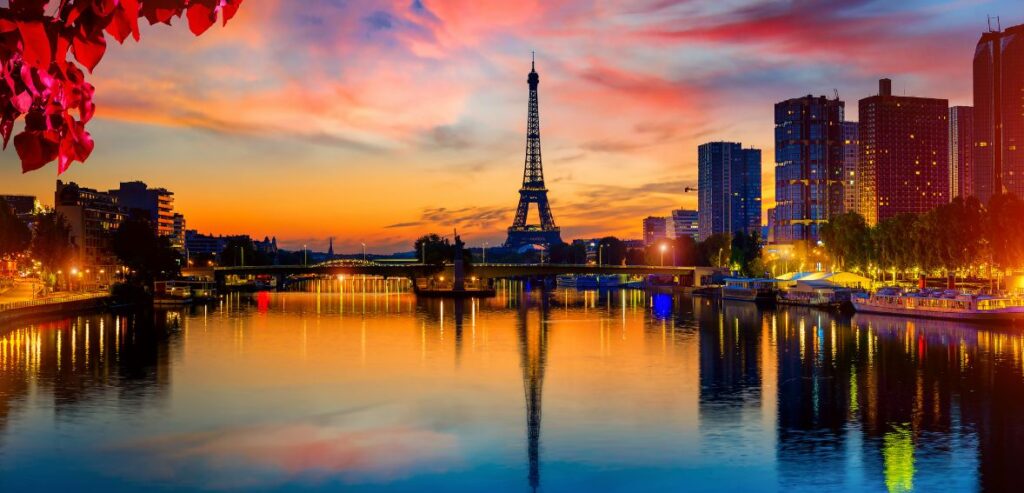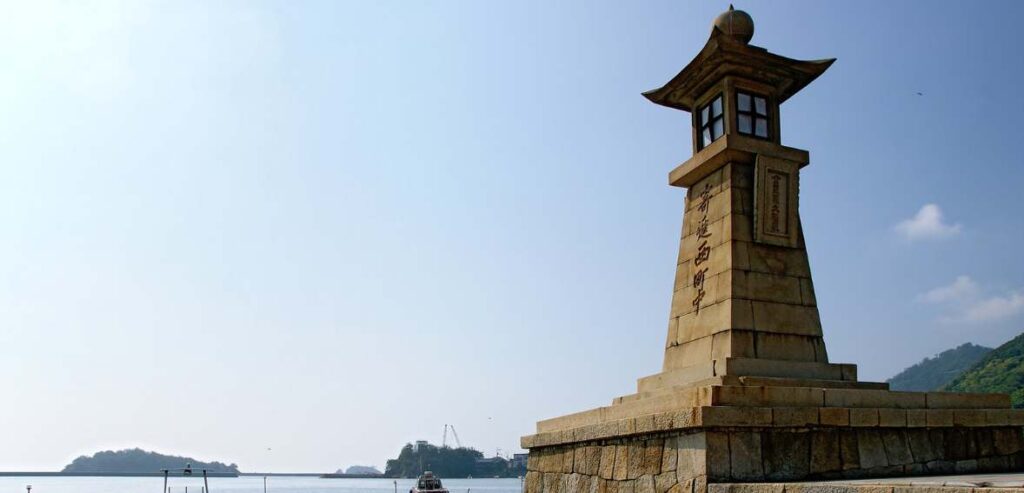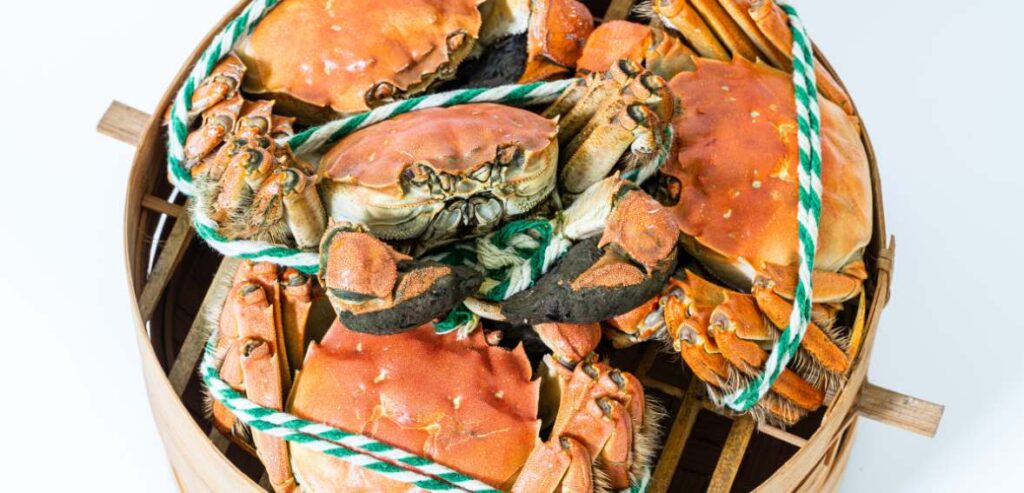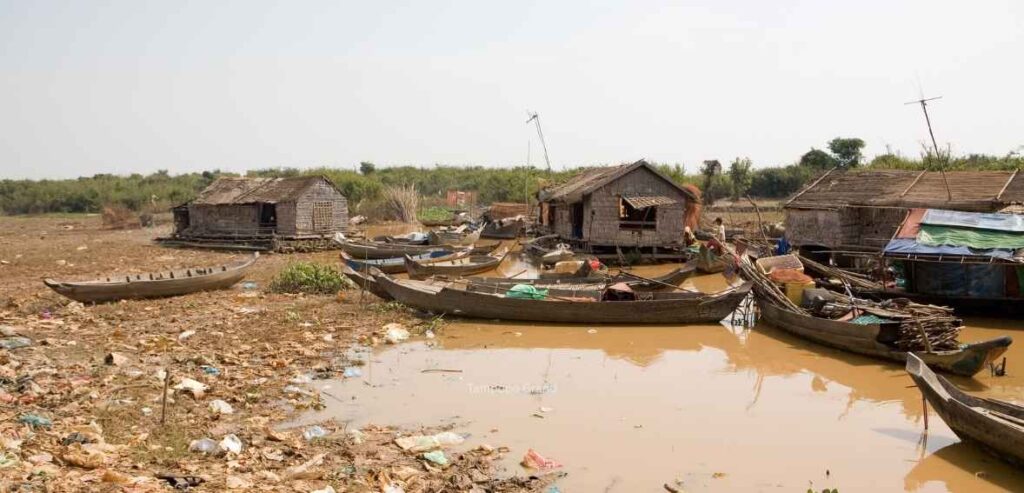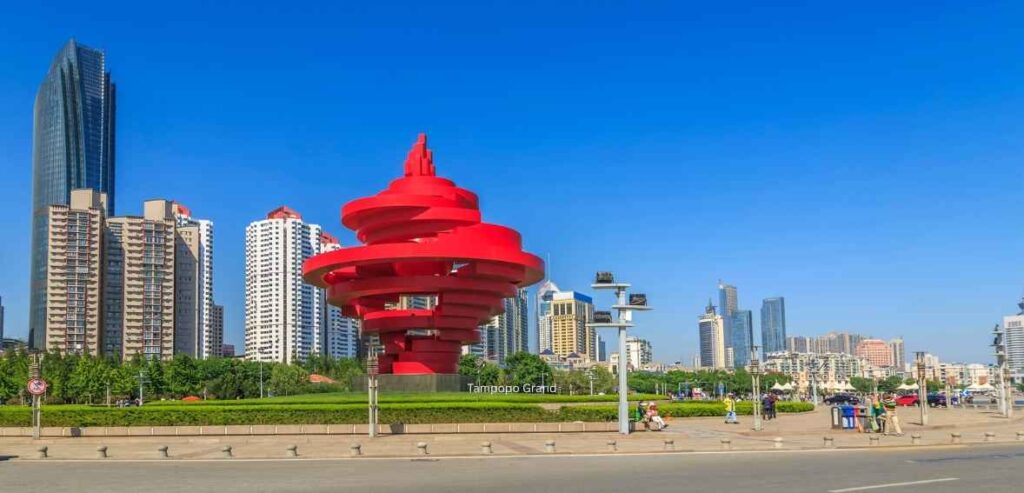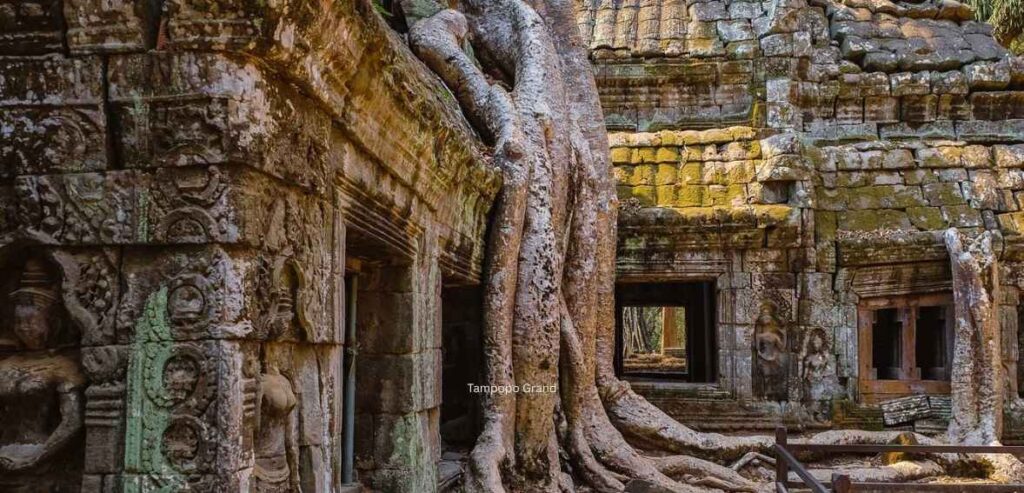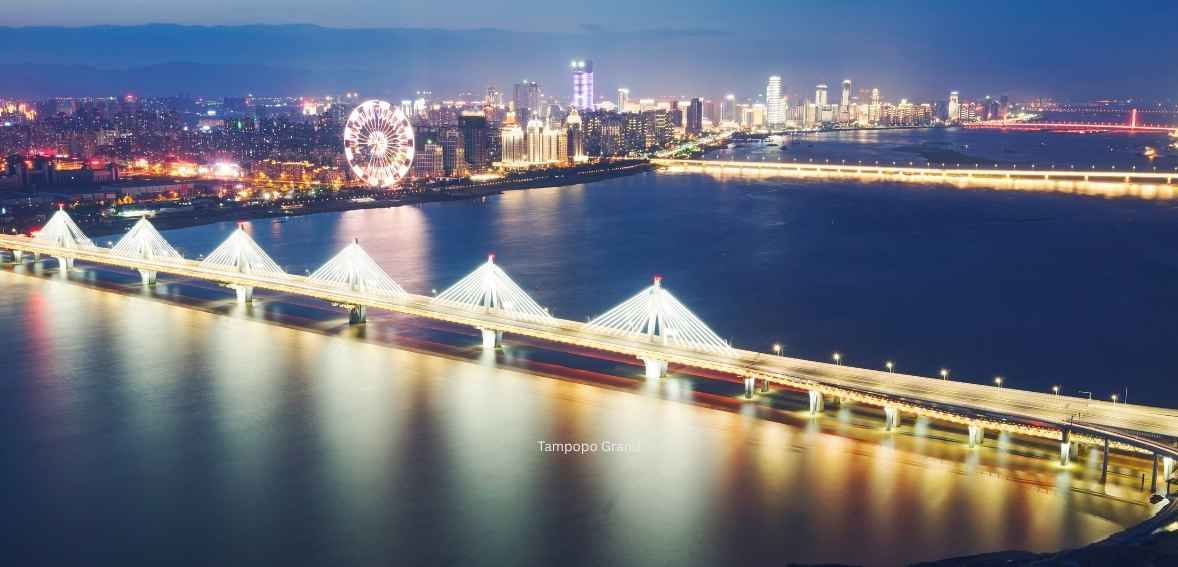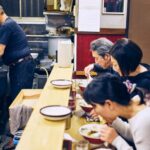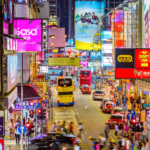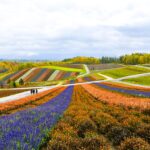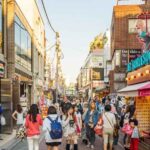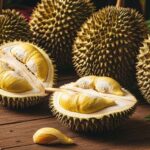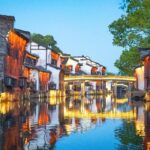Now Reading: South West Japan Sakura Trip, Day 4 (Kyoto)
-
01
South West Japan Sakura Trip, Day 4 (Kyoto)
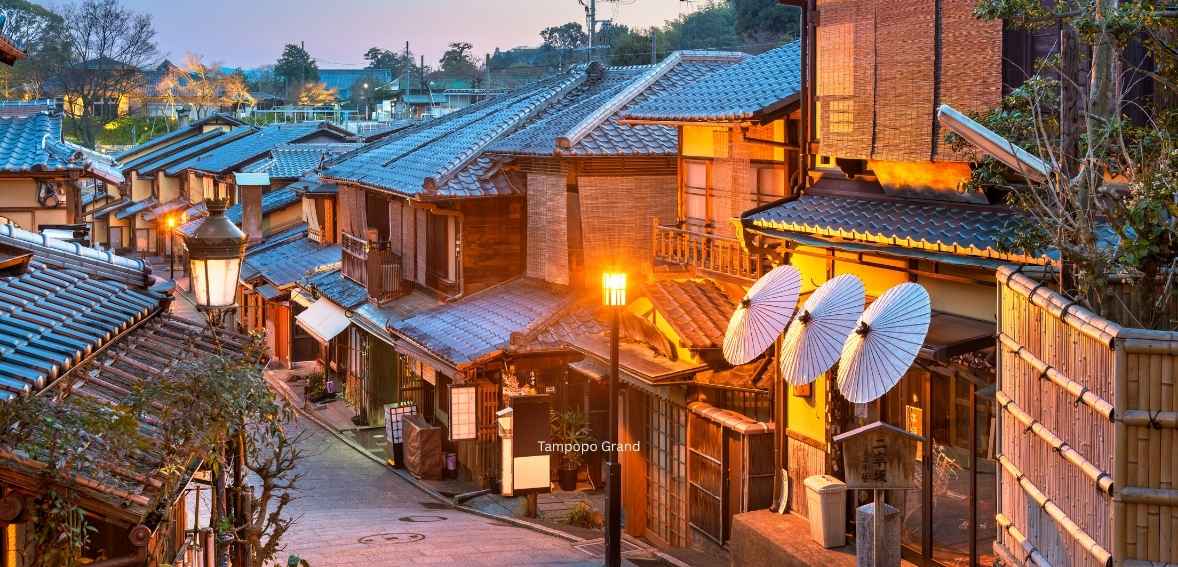
South West Japan Sakura Trip, Day 4 (Kyoto)
Day 4 : Northern Kyoto & Arashiyama
Breakfast this morning was served in the same private room by the pretty Zen garden. The usual items you find at breakfast, namely grilled fish, tofu, eggs and some pickles. I like Japanese breakfast!
Breakfast @ Sanga
After breakfast we took a taxi to Kinkakuji. We could have taken the train and bus but that would have taken us almost 40 mins. As we have little time in Kyoto, we did not want to spend our precious time commuting. Taxi cost was reasonable and we got to Kinkakuji in a jiffy. Taking a taxi also ensured that we arrived early before the crowds.
Kinkakuji, also known as the Golden Pavillon, is a zen temple in northern Kyoto whose top 2 floors are covered in gold leaf. It used to be the retirement villa of the shogan Ashikaga Yoshimitsu, and according to his will became a zen temple after his death in 1408. It is also the inspiration for the similarly named Ginkakuji (Silver Pavilion), built by Yoshimitsu’s grandson, Ashikaga, Yoshimasa.
Kinkakuji is an impressive structure overlooking a pond. You immediately take a left when you enter the garden to have the best view of the pavilion from across the pond.
Kinkakuji, The Golden Pavilion, Northern Kyoto
We strolled around the compound for a while and then left. We took bus 59 from opposite the entrance of Kinkakuji to Ryoanji. The ride was just about 5 mins or so.
Ryoanji is the site of Japan’s most famous rock garden. It was an aristocrat’s villa before its conversion to a Zen temple. The garden consists of a rectangular plot of pebbles, surrounded by low earthern walls with 15 rocks laid out in small groups on patches of moss. An interesting feature of this garden is that from any vintage point, at least one rock is hidden from the viewer. It would have been a perfect place to meditate here if not for the constant stream of unending visitors.
Rock Garden in Ryoanji
We explored the grounds of Ryoanji and found it beautiful with the cherry tress in bloom. There is a pond at the back with a center island which has a cherry tree is full bloom. So don’t just leave after visiting the rock garden.
Ryoanji’s Temple Grounds
A few hundred meters from Ryoanji is Ninnaji. Ninnaji is one of the many great temples of Kyoto and is listed as a UNESCO World Heriitage site. The temple is also famous for a grove of late blooming cherry trees. So it you visit a few days after the peak cherry blossom season, you can try your luck at Ninnaji. Oh, and there were so many ladies walking around in beautiful kimono, I just had to take some pictures of them!
The grounds of Ninnaji, Northern Kyoto
The highlight of Ninnaji is the Goten, the former residence of the head priest. Built in the style of an imperial palace, the graceful buildings are connected with each other by covered corridors and are surrounded by beautiful rock and pond gardens. By now, I’m sure you will realise that I was attracted more to the the gardens than to the interiors of the temples and residences. Somehow I find the interior of the residences very bare (typical of Japanese style). I have poor imagination and can never imagine what it was like.
The rock and pond gardens of Ninnaji, viewed from the corridor of the former head priest’s residence.
From the nearby Onuro-Ninnaji Station, we could have taken the train to Arashiyama. But again, lazy us decided to take a taxi to save time. So we took a taxi directly to Tenryuji in Arashiyama. It was near lunch time when we arrived at Tenryuji and by then it had started to rain quite heavily. So we decided to get a simple lunch of Tempura udon and Tempura soba at a small eatery opposite the temple, hoping that the rain will stop by the time we are done.
Tempura soba and tempura udon for lunch @ Arashiyama
Luckily by the time we were done with lunch, the rain had stopped. So we went to Tenryuji.
Tenryuji is the most important temple in the Arashiyama district. It is also a UNESCO World Heritage Site. The temple buildings of Tenryuji were destroyed by fires over the centuries, but its garden is still in its original form.
The gardens of Tenryuji
The north entrance of Tenryuji leads directly to the well known bamboo grove of Arashiyama. The whole place is covered with bamboos growing close together. Very pretty.
Bamboo Grive, Arashiyama
We took a short walk to the end of the bamboo grove, then doubled back in the direction of Tenryuji and Arashiyama station. We walked along the main street of Arashiyama towards Togetsukyo bridge, and browsed the shops along the way.
Main Street of Arashiyama
Togetsukyo Bridge is Arashiyama’s most iconis landmark. It is beautiful during the cheery blossom week.
Togetsukyo Bridge, Arashiyama
The riverside park next to the bridge had dozens of cherry trees. Absolutely charming. We stopped by a coffee shop for a cup of coffee before moving over to sit on one of the benches under the cherry trees along the river bank.
Chilling under the cherry trees @ Arashiyama
There were many rickshaw riders at Arashiyama. DH was initially uncomfortable taking rickshaw rides as it seems cruel to be pulled by a fellow human being. The rickshaw riders at Arashiyama seems to be mainly young men. We were approached by many to take a ride. In the end, it seems their way of making a living and they don’t seem to be forced to do the job, so we took it. We did a short round along the side streets. The side streets had quaint buildings and were full of pretty cherry trees too. We ended our ride at the Arashiyama train station.
Rickshaw ride along the streets of Arashiyama
From the train station, we took the Arashiyama train and changed to the subway to get back to our ryokan.
Back at our ryokan, after a short rest, we were served our dinner in the private garden room. That night, we had beef sukiyaki for dinner. We were served sashimi as appetiser before our beef sukiyaki. The sukiyaki was delicious. Beef was very tender. I had never liked sukiyaki in Singapore where you just put your beef in a sauce pot to cook. But here, it was done very differently. The beef are fried over a hot plate and then the sauce which is slightly thick is poured into it. Not too much, but just enough to flavour the beef. The cooked beef is then dipped in a bowl of beaten raw egg before you eat it. Now I know what authentic sukiyaki is!
Beef Sukiyaki for dinner @ Sanga, Kyoto


